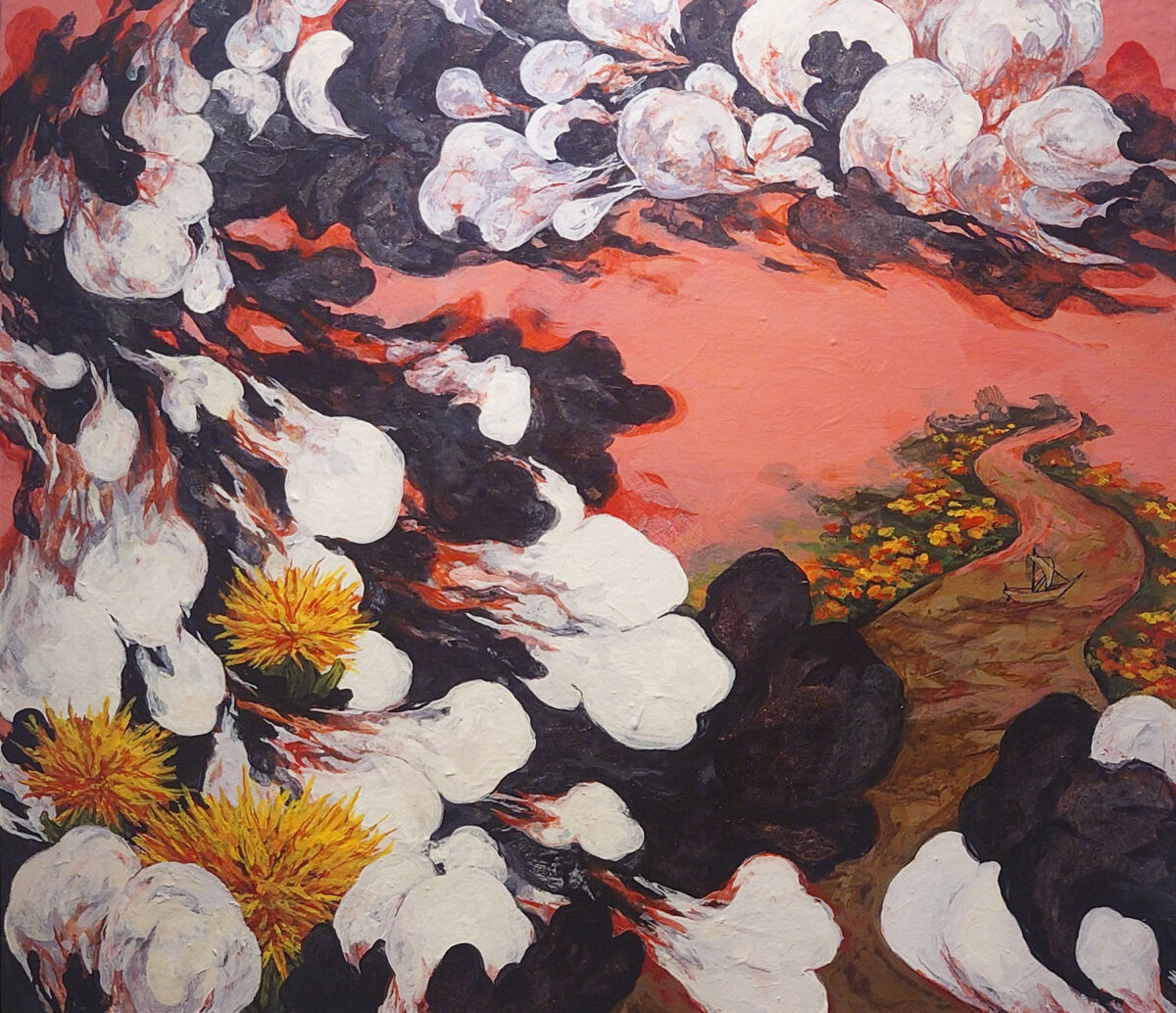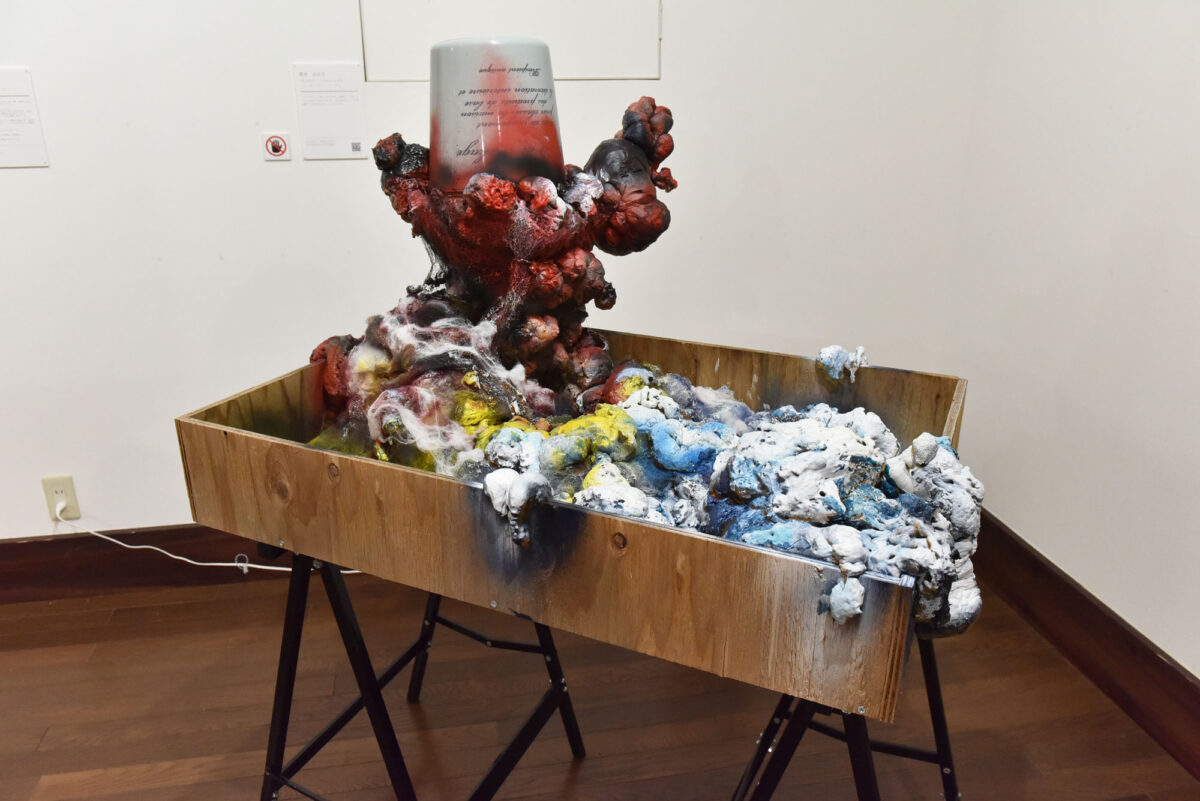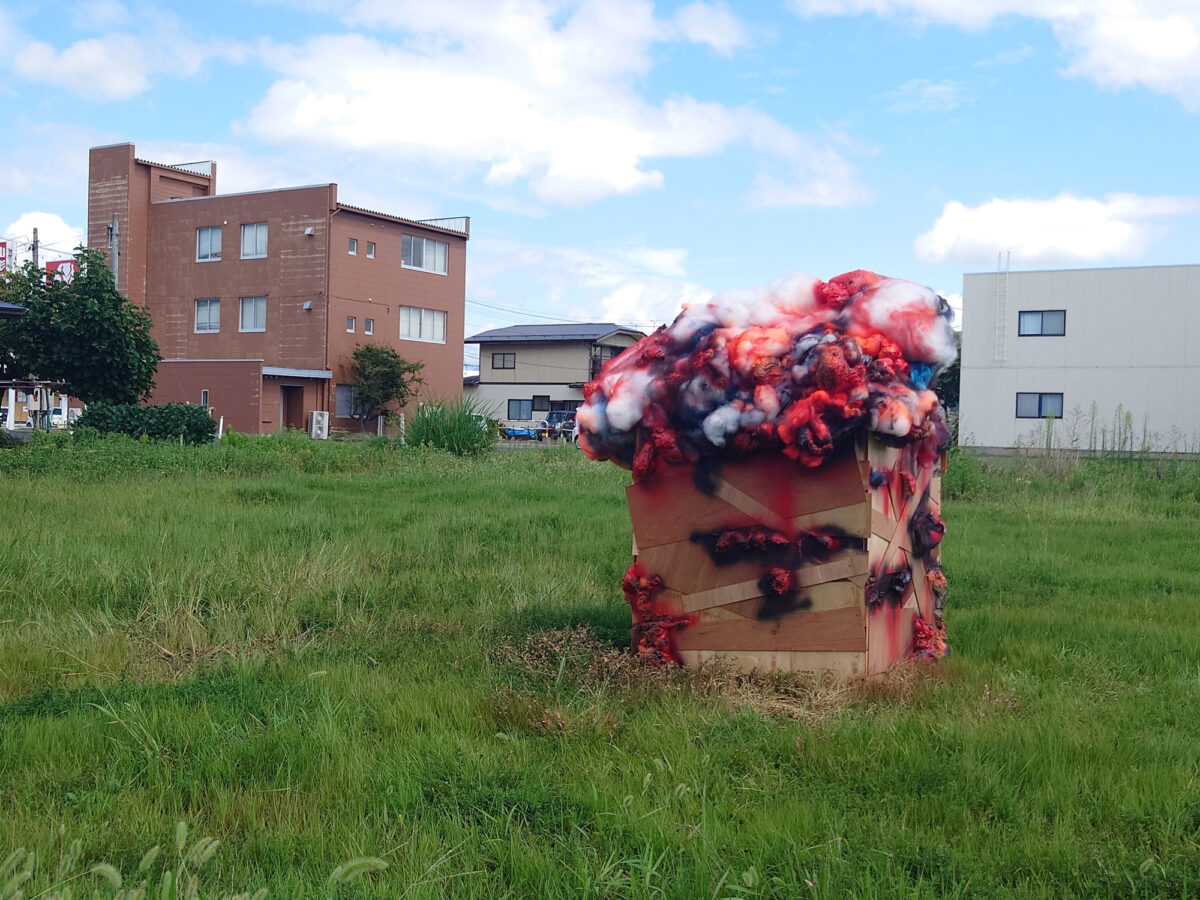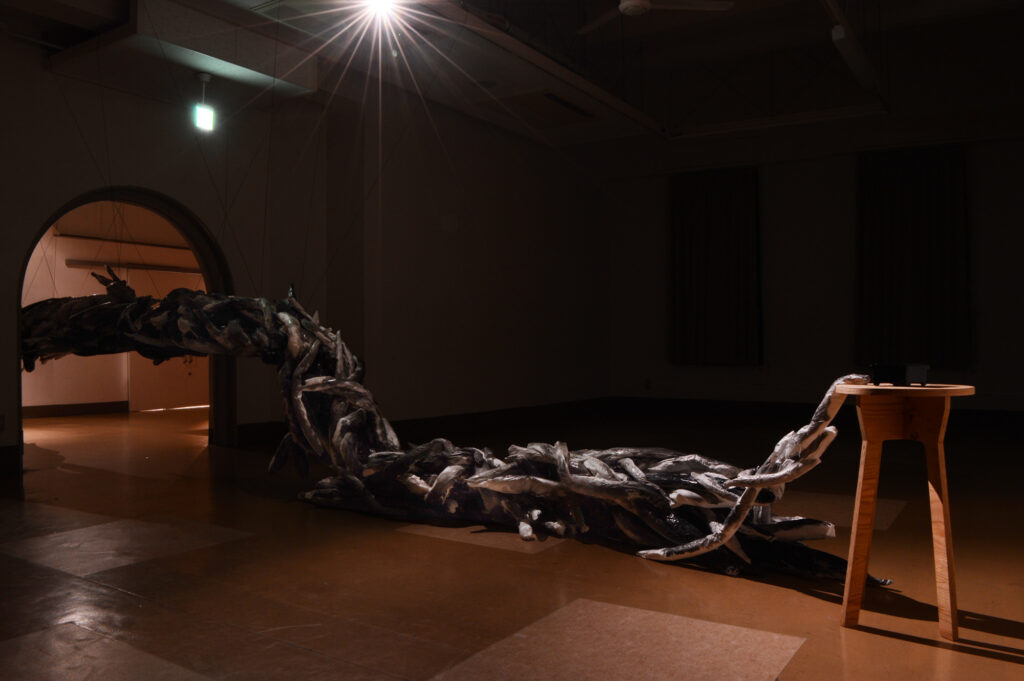
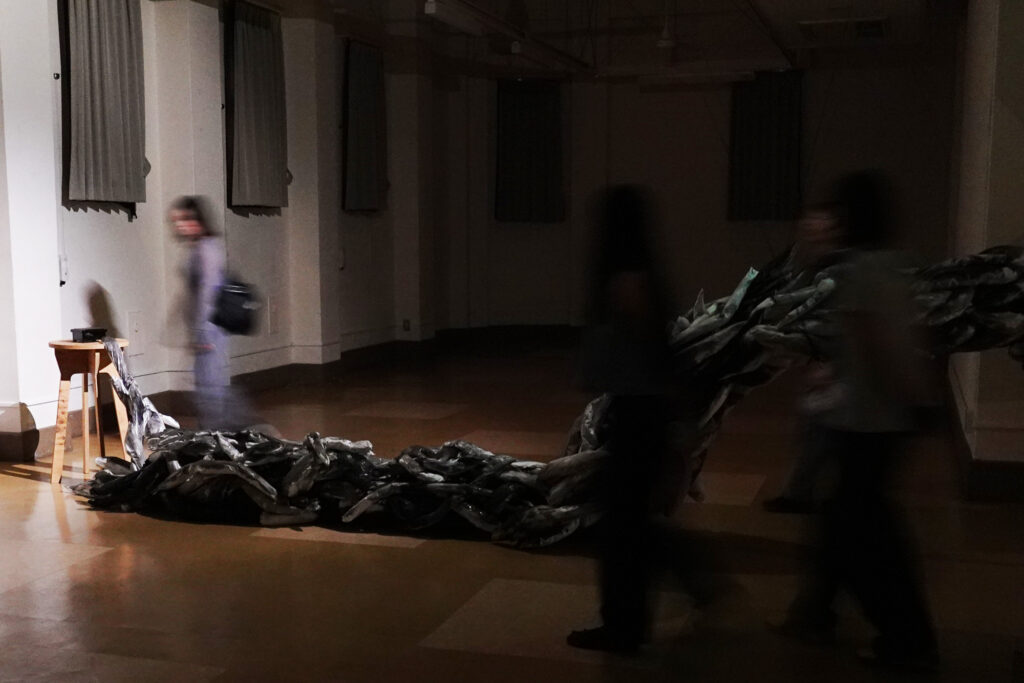

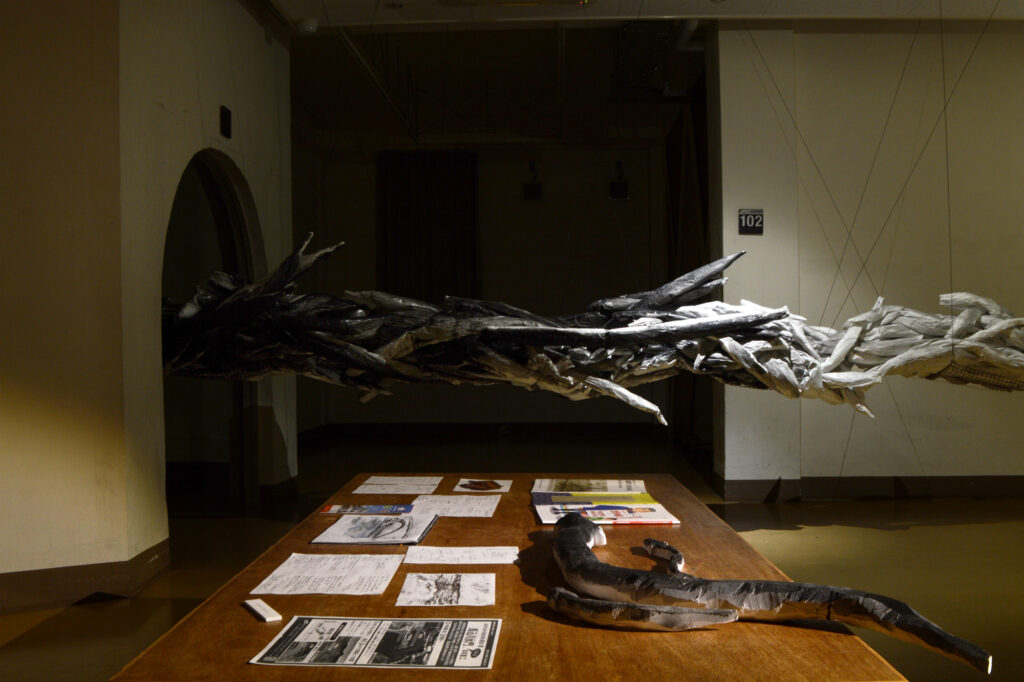
2025
インスタレーション
全長12m サイズ可変
紙、アクリル、墨、重箱
浜松市鴨江アートセンター アーティスト・イン・レジデンス 成果発表作品
この展示は、1498年8月25日に遠江国を襲った「明応地震」をモチーフとしています。
レジデンスで浜松のリサーチを行っていく中で、浜名湖の「今切口」が、かつての南海トラフ巨大地震によって生まれたことを知りました。この「明応地震」のマグニチュードは8クラス相当と云われています。当時の人々にとっての「大震災」だったことが想像できます。
そんな災禍によって浜名湖が汽水湖へと変貌したことで、うなぎの稚魚、シラスウナギが浜名湖へとやってくるようになりました。ご存知の通り、現代の浜名湖はうなぎの一大養殖地として名を馳せています。
「災禍」であるはずの地震が、浜松に「恵み」をもたらしたことに自然の両義牲を感じ、その象徴として、うなぎの群れを制作しました。
再び、南海トラフ巨大地震が浜松を襲った際、人々がそれを「恵み」として捉えるまでに一体何十年、何百年かかるでしょうか。
そして「災禍」が「恵み」に変わった時がいわゆる「復興」なのではないかー。
そんなことに思いを馳せながら、鑑賞していただけますと幸いです。
2025
Installation
Total length: 12 m, variable dimensions
Paper, acrylic, ink, tiered food boxes (jūbako)
Exhibited work from the Artist-in-Residence program at Kamoike Art Center, Hamamatsu
This exhibition takes as its motif the Meiō Earthquake that struck Tōtōmi Province on August 25, 1498.
During my residency research in Hamamatsu, I learned that the Imagire-guchi of Lake Hamana was formed as a result of a massive Nankai Trough earthquake in the past. The Meiō Earthquake is said to have been of magnitude 8 class, and we can imagine that for the people of that time, it was truly a “great calamity.”
Yet, it was precisely through this calamity that Lake Hamana was transformed into a brackish lake, allowing glass eels—the young of unagi (Japanese eel)—to enter. As you know, today Lake Hamana is renowned as one of Japan’s major eel-farming regions.
I was struck by the dual nature of the natural world: an earthquake, which should have been a calamity, also brought blessings to Hamamatsu. As a symbol of this paradox, I created a swarm of eels.
When the next great Nankai Trough earthquake strikes Hamamatsu, how many decades—or even centuries—will it take before people come to regard it as a “blessing”? Perhaps the moment when a calamity is transformed into a blessing is precisely what we call reconstruction.
I hope you will keep such thoughts in mind as you experience this work.
